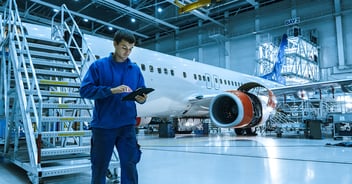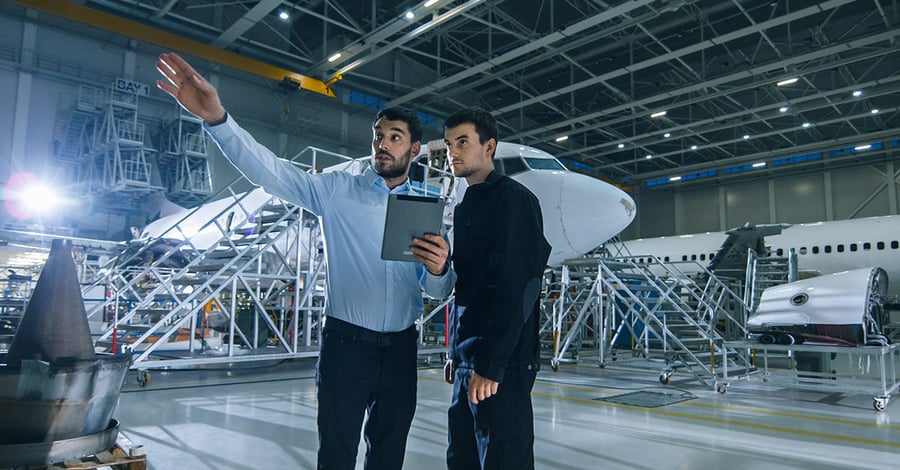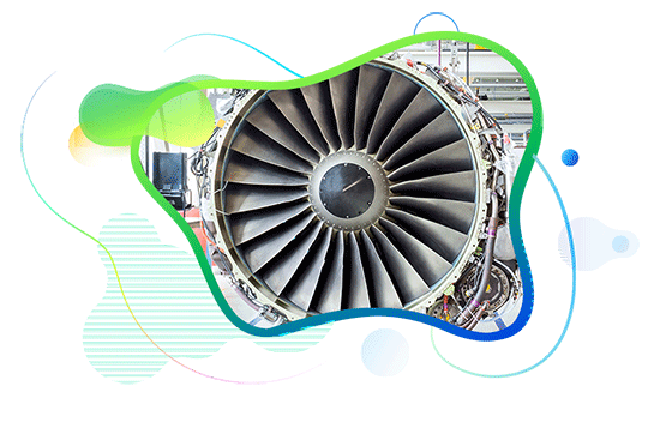
Smart MRO: The Digital Revolution in Aviation, Aerospace & Defense
Smart MRO: The Digital Revolution in Aviation, Aerospace & Defense
5:37
Published :

The aviation Maintenance, Repair, and Overhaul industry is experiencing a period of rapid growth, driven by increasing air travel and the rising complexity of aircraft. This growth brings with it a critical need to simplify the intricate processes that underpin MRO operations. While much attention is often focused on the mechanics on the hangar floor, the real value lies in empowering the unsung heroes of the back office – the material planners, work scope planners, and support staff.
These professionals are constantly troubleshooting, analyzing data, and determining the most effective course of action. Their ability to quickly identify issues, understand their root causes, and devise effective solutions is paramount. Technology that saves them time and provides predictive capabilities based on the vast amounts of data they handle is invaluable. Predictive insights, driven by data analysis, are no longer a luxury but a necessity for optimizing maintenance schedules and minimizing aircraft downtime.
The next 3-4 years promise significant disruption in the MRO landscape, with those embracing technology and modern infrastructure gaining a distinct competitive edge. These technological advancements will offer substantial value to customers by driving efficiency and cost savings.
One key area ripe for transformation is back-office and process automation. Consider the sheer volume of PDF documents used in MRO. Generative AI models can revolutionize how this data is accessed and utilized, enabling mechanics to quickly retrieve historical data and insights. Digital task cards further streamline workflows, replacing cumbersome paper-based processes.
Another area of focus is pricing models. Moving towards fixed-price and outcome-based pricing requires accurate cost estimations. AI and machine learning can play a crucial role in determining the optimal fixed price by analyzing historical data and predicting non-routine maintenance, labor hours, and spare parts requirements.
Managing work packages is another complex undertaking. Setting up tasks, applying Service Bulletins (SBs) and Airworthiness Directives (ADs), assessing the impact on aircraft configuration, and preparing work scopes are time-consuming and dynamic activities. The process can take 8-10 days, and the dynamic nature of MRO means configurations can change with each aircraft or engine received. OEM revisions to repair manuals, often monthly, add another layer of complexity. Streamlining induction, work-scoping, kitting management, and billing processes is critical. Imagine reducing bill settlement times from 20-30 days to just 2-3. This is the kind of efficiency application capabilities should target.
Finally, digital connectivity is key. Supplier and customer portals facilitate seamless data exchange and accelerate interaction within the MRO ecosystem.
The rapidly expanding aviation industry demands cutting-edge technology to drive operational efficiencies. Modern aviation businesses require solutions that go beyond basic functionality and address the complex challenges they face. Key needs include:
Seamless communication and data sharing across departments and with external partners are essential for streamlined operations. This means breaking down information silos and fostering a collaborative environment.
Moving beyond reactive maintenance to a proactive approach is crucial. AI-powered forecasting of material and resource requirements enables predictive maintenance, minimizing downtime and optimizing resource allocation. This includes anticipating potential issues before they occur.
Aviation maintenance and repair processes are often complex and involve numerous stakeholders. Streamlining these processes through automation and digital tools is critical for efficiency and cost reduction. This includes simplifying workflows and reducing manual intervention.
Visibility into every stage of the maintenance and repair process is essential for informed decision-making and continuous improvement. Real-time tracking and reporting provide the transparency needed to identify bottlenecks and optimize performance.
Automating repetitive tasks frees up valuable time and resources, allowing personnel to focus on higher-value activities. This includes automating data entry, approvals, and other routine processes.
Optimizing inventory levels is crucial for minimizing costs and ensuring parts availability. Advanced planning and procurement tools, often leveraging AI, help predict demand, optimize stock levels, and streamline the procurement process. This includes better forecasting and demand planning.
In short, the aviation industry needs integrated, intelligent MRO solutions that enable proactive maintenance, streamlined processes, and data-driven decision-making.
The industry needs to refocus on low-hanging fruit: planning, documentation, and back-office processes. By focusing on bringing value to individual roles and eliminating non-value-added tasks, MRO providers can unlock significant efficiencies and improve overall performance. The future of aviation MRO hinges on embracing technology and empowering the people who keep aircraft flying safely and efficiently.

All Rights Reserved. © Copyright 2024. Ramco Systems.